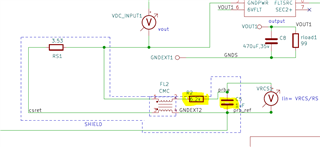Other Parts Discussed in Thread: UCC28710, , UCC28711, UCC28780
Hello
We have a module use generally use UCC28710 dbr and it works fine.
Due to shortage , we bought some UCC28712 thinking it should make no difference because we do not use NTC or CBL COMP
NTC pin is open while with 28710, we use 10 k on pin 3
Strangely , 28712 suffers a huge efficiency loss and it is 50% lower at 250vdc input.
I have failed to figure out why !
Out of a Lot of 10, 5 are with 28712 and each has 50% loss in efficiency - cannot be a random reason!
Any help in the matter will be highly appreciated
r


